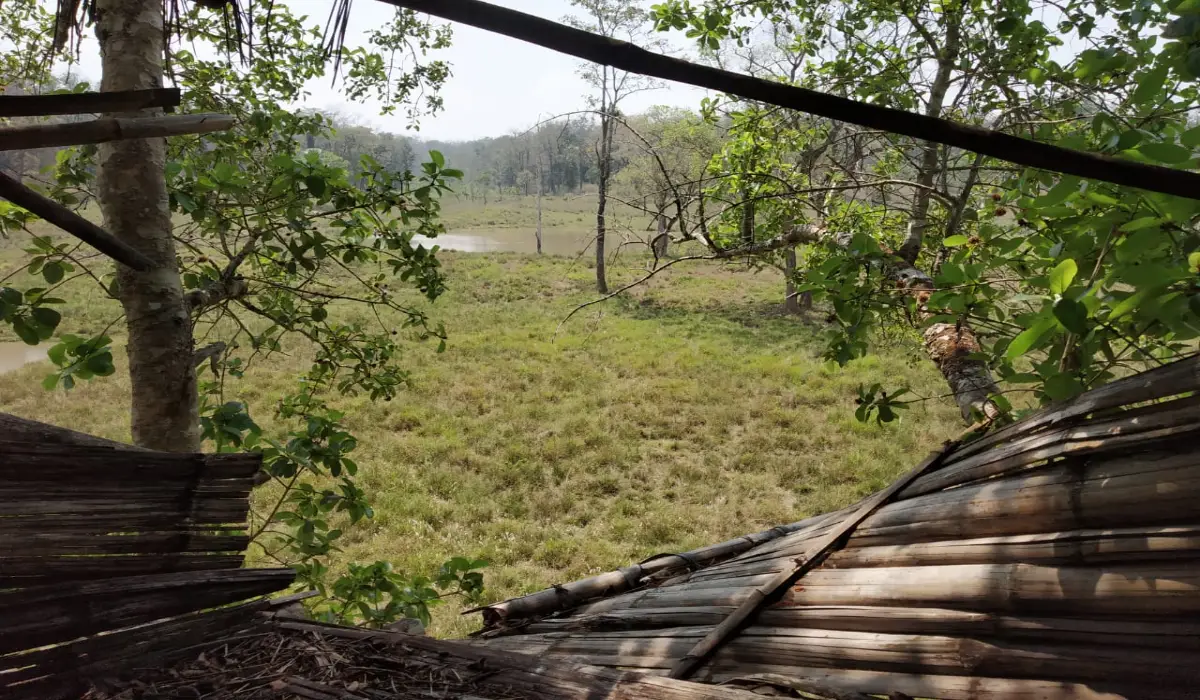
“There is always an adventure waiting in the woods” – KATELYN BOLDS
The world of birds is endless. I have always been curious about nature and the creatures which dwell within. Every new exploration of my surroundings has often made me awestruck, be it a stroll in my garden or a walk through the woods. Just like the trip to Wayanad Wildlife sanctuary on 26 February 2021 and it turned out quite special for me. It was my first opportunity to take part in an official survey hosted by the forest department. Even though I have visited the sanctuary as a tourist, the thought of exploring the fauna and flora from a different perspective was quite intriguing. I was very eagerly waiting for this survey to happen since its announcement. The COVID pandemic had taken away many of my fruitful days and this was quite a relief from that solitude and boredom.
It was the annual raptor survey across Wayanad. Raptors are birds of prey which scavenge on dead and decaying. With an extent of 344 km2, Wayanad wildlife sanctuary is home for vulture species and is the only place in Kerala where these scavengers are found in free range. The mixture of deciduous and semi-evergreen patches makes the sanctuary rich in fauna and flora. It is also home to many endemic species like Banasura Laughing thrush, Wayanad Laughing thrush, Broad-tailed grass bird, etc.. . The first reporting point was Gaja, an inspection bungalow of the forest department. As it was my first survey, I was quite nervous with what was going to happen next. But, I got a warm reception from the hosts. I was glad to meet my seniors there from Center for Wildlife Studies. I felt calm as well as excited to join them in the survey. The orientation session by Vishudas sir was interesting; the information about raptors was quite new to me.
I was grouped with three of my seniors, Pranjali, Nitya, and Rose whom I was meeting for the first time. We were assigned to ‘Nallathani’ an Anti-Poaching Camp in Wayanad wildlife sanctuary. After a quite flamboyant lunch we left for Nallathani from Gaja with ample supplements for 2 days. We had a pit stop in the Bathery division forest office; the range officer told us more about Nallathani. Covered with moist deciduous forest, there was often Tiger and Sloth bear sightings in the place. With patches of open grasslands, it offered a great place to spot raptors. We restarted our journey and entered the forest area. The vegetation showed the characteristic of a deciduous forest, the path which we were moving through was pretty dry and dust began to fly in the air. Moving ahead in the bumpy roads, our eyes were in search of something that we never found. Just when disappointment crept unto us, glimmer of hope jumped into our minds in the form of a deer. Finally we reached Nallathani after a 30 mins ride. The place was named after the waterhole which never went dry even in the toughest summers. We were high spirited to start explore the place as soon as possible. We met the forest watchers and without any delay, we went out for an evening stroll. The evening sun gave a golden glow to the forest. We even spotted honey buzzards in between the shimmers of the canopy. The watchers had warned us that we may see elephants crossing, so we were cautious. The watchers picked us some wild gooseberries on the way, which we munched on the way enjoying the sourness. Suddenly the watcher waved us to stop; something was moving in the forest. There were sounds of cracking of branches and we could feel something moving through the bushes. The watcher pointed to the opposite hill; there we saw an elephant herd moving going uphill. It was a small herd, with 5 members. It was such a delightful sight. Barely 200 meters away, was the herd slowing moving away from us. We stood there for some time watching them going into the lush green canopy.
As it grew dark, we returned to our shelter and started preparing dinner. Solar panels were installed around to provide adequate electricity. Away from the busy online world, I felt the tranquillity. We made some tea and sat outside our shelter, it was pretty cold outside Listening to the sounds around and sipping the small cup of tea in the midst of that forest as the night was setting in was indeed a great feel. After sometime that night we heard sounds from the nearby waterhole, the watcher told us not to shine light at that direction. It was another herd of elephants, which came to drink from the water hole. There was a calf with them, walking past its mother. It was trying to drink from the hole along the others and suddenly fell down into the hole. Seeing that; all of us stood frozen for a second. But the matriarch came to rescue soon. It picked up the calf with the trunk. It was such a relief to see them return back to the woods.
The next day I woke up to a misty morning. It was still cold and I wanted to sleep more, but the idea of going to field made me ready to start the day. We all went near the water hole for freshening up. Suddenly Pranjali spotted a bird perching in the nearby tree, since there was mist it was not clear to identify. But the size suggested a raptor. We curiously went near it only to find out it was a hawk-cuckoo. After the mist was cleared and sun began to shine brightly, we set out for spotting raptors. The watcher lead the way and we followed. He used to leave markings on the way as indication. As the time was near 10am, we saw a crested serpent eagle flying near us. We noted down its activity and direction of flight. It was great to walk along the forest trails. There was bear scat in one trail. As we moved forward, there was many more raptors like honey buzzard, goshawk etc. and alas! We were able to spot a vulture. It flew so high and to identify which it was, we had to take a photograph. It was white rumped vulture. Later that day we did spot some more individuals of white rumped vulture. Also there were so many passerine birds and I saw an Indian roller for the first time. That was definitely a great birding session; my seniors taught me many new birding tips. We returned to the shelter by 3 pm hungry and tired from the long walk. In the night we had long conversations with the watcher, he shared his experience and stories of the forest. As he had served as a watcher for more than two decades, there were many thigs to be told. It was only then I came to know about the life inside forest. About the tribal settlements, human- wildlife interactions, smuggling and poaching thieves whom dwelled in the forest nearly a decade ago. It was exciting yet terrifying stories. He also mentioned about the elephants there and how the indigenous peoples identify individuals. It was a great session and memorable one.
The next day started walking a new trail for survey. This time we saw a new vulture species along with the white rumped vultures, it was red- headed vulture. We were so happy and excited to have a new addition to the list. It has a prominent naked head; deep red to orange in colour. That day I got see fairy blue bird, woolly necked stork etc. by noon we reached a grassland kind of patch, and there stood a tree house in the middle of it. This tree house was stood pretty high. It was wonderful to sit there in the shade in the midst of scorching sun. We took some memorable pictures in that tree house. In the middle of that grass land there laid a skull, probably of a sambar deer.
It was our last day at Nallathani. We bid good bye to the watchers and thanked them for their company. We returned to our base, the Gaja inspection bungalow. There was an experience sharing session there. Hearing from everyone, their stories from wild was overwhelming for me. We filled up the checklist with our recorded data. But the experiences I gathered could never be contained on a sheet of paper.

